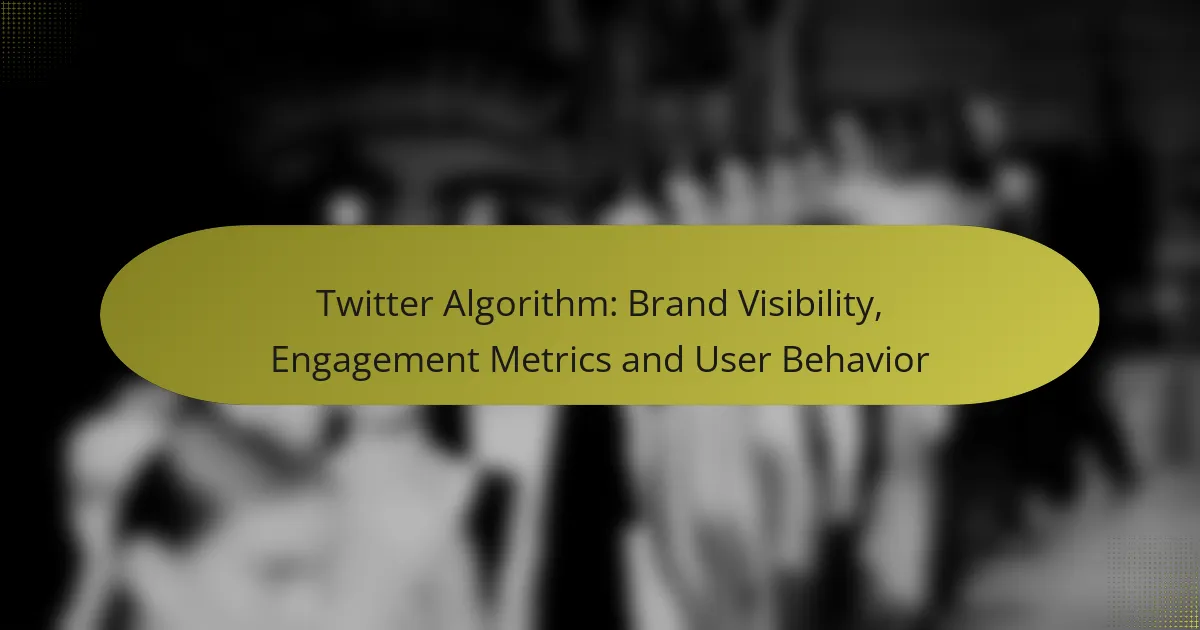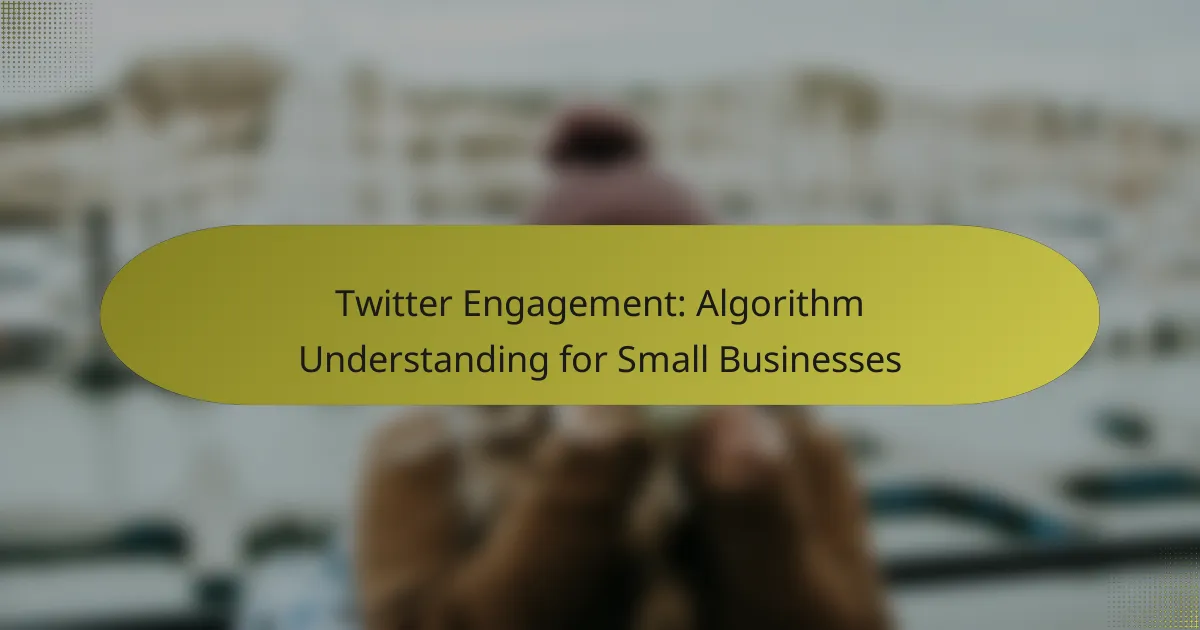The recent changes to Twitter’s algorithm have reshaped the landscape for marketers, particularly in Australia, by altering content prioritization and visibility. These updates emphasize user interactions and introduce new ranking signals, prompting businesses to adapt their engagement strategies and content creation methods to effectively connect with their target audience.
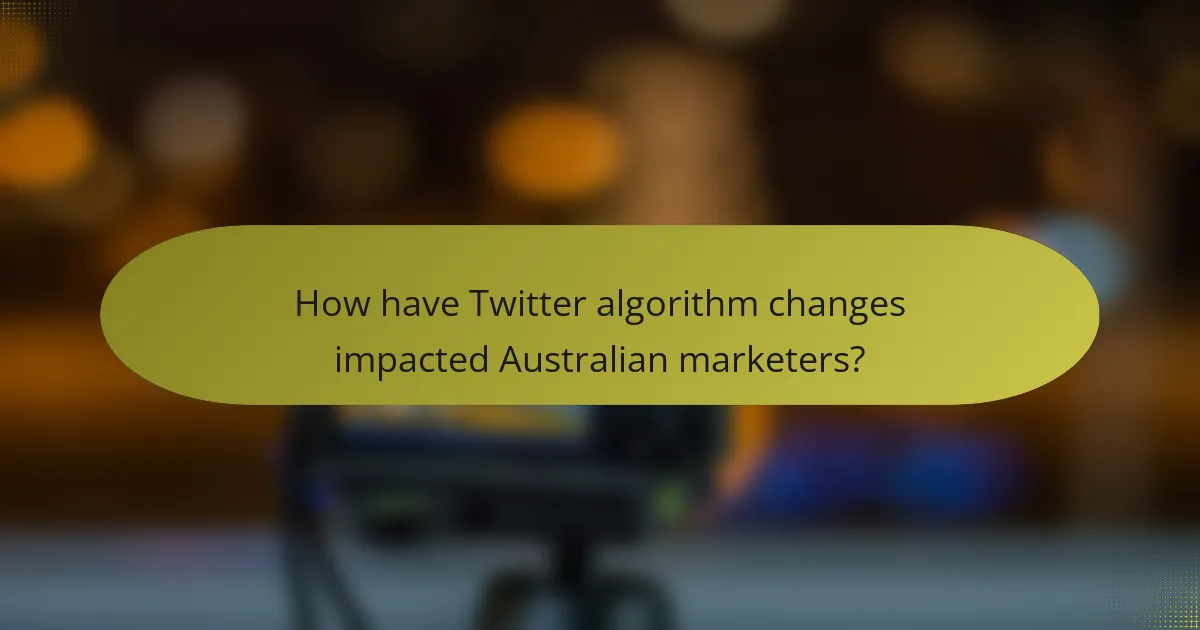
How have Twitter algorithm changes impacted Australian marketers?
The recent changes to Twitter’s algorithm have significantly affected Australian marketers by altering how content is prioritized and displayed. These shifts necessitate adjustments in engagement strategies, content creation, and audience targeting to maintain effectiveness in reaching potential customers.
Increased engagement rates
Australian marketers have observed increased engagement rates as Twitter’s algorithm now favors more relevant and timely content. Posts that resonate with current trends or events tend to receive higher visibility, leading to more interactions from users.
To capitalize on this, marketers should focus on creating content that aligns with trending topics or hashtags. Engaging visuals and concise messaging can further enhance interaction rates, often resulting in engagement increases of 20-30% during peak times.
Shift in content strategy
The algorithm changes have prompted a shift in content strategy for Australian marketers, emphasizing the importance of authenticity and relatability. Content that showcases genuine brand personality and connects with users on a personal level tends to perform better.
Marketers should consider diversifying their content formats, such as incorporating videos, polls, and user-generated content. This variety not only keeps the audience engaged but also encourages sharing, which can amplify reach and visibility across the platform.
Changes in audience targeting
With the new algorithm, Australian marketers must adapt their audience targeting strategies to reflect changes in user behavior and preferences. The algorithm prioritizes content that is more likely to engage specific user segments based on their interactions.
Marketers should utilize Twitter’s analytics tools to gain insights into audience demographics and engagement patterns. Tailoring content to meet the interests of these segments can enhance targeting effectiveness, ensuring that marketing efforts resonate with the right users.
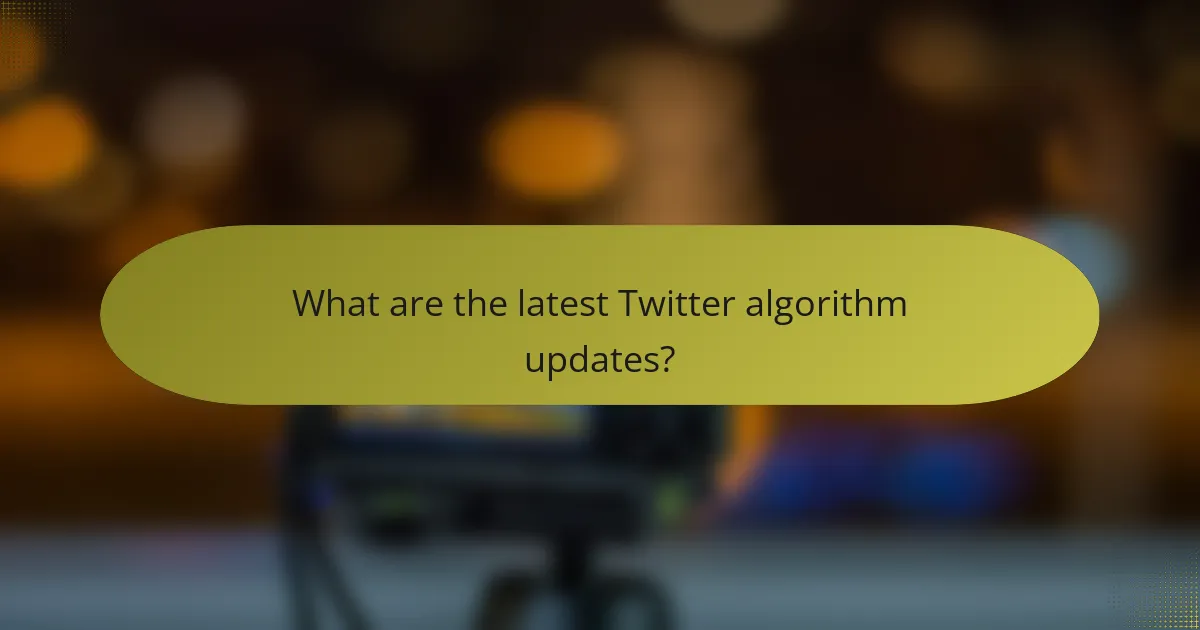
What are the latest Twitter algorithm updates?
The latest updates to Twitter’s algorithm focus on enhancing user experience by introducing new ranking signals, emphasizing user interactions, and modifying tweet visibility. These changes aim to make content more relevant and engaging for users, ultimately influencing how tweets are displayed in feeds.
Introduction of new ranking signals
Twitter has introduced several new ranking signals that prioritize content based on relevance and user preferences. These signals include factors such as tweet engagement history, the credibility of the source, and the timeliness of the content. By analyzing these elements, the algorithm can better determine which tweets are likely to resonate with individual users.
For example, tweets from accounts that a user frequently interacts with may be ranked higher, ensuring that users see content that aligns with their interests. This shift encourages content creators to engage authentically with their audience to improve visibility.
Focus on user interactions
The updated algorithm places a strong emphasis on user interactions, meaning that tweets receiving more likes, retweets, and replies are more likely to be shown prominently. This change reflects a shift towards rewarding engaging content that sparks conversations among users.
Content creators should focus on crafting tweets that encourage interaction, such as asking questions or sharing polls. By fostering engagement, users can increase the likelihood of their tweets being seen by a broader audience.
Changes in tweet visibility
Recent updates have altered how tweets are displayed in users’ feeds, with a greater emphasis on personalized content. Tweets that align with a user’s interests and past interactions are prioritized, while less relevant content may be pushed down or omitted. This means that users may see fewer tweets from accounts they follow if those tweets do not generate significant engagement.
To adapt to these changes, users should regularly engage with their followers and create content that resonates with their audience. Monitoring engagement metrics can help identify what types of content perform well and adjust strategies accordingly.
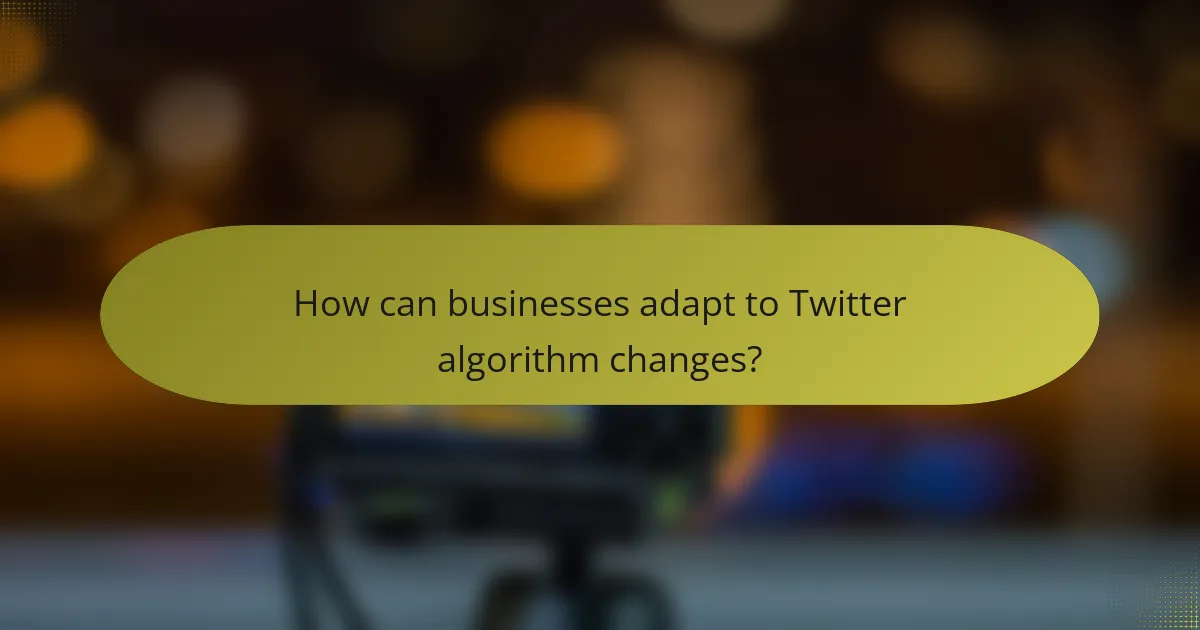
How can businesses adapt to Twitter algorithm changes?
Businesses can adapt to Twitter algorithm changes by focusing on creating engaging content, leveraging analytics tools, and employing A/B testing strategies. These approaches help ensure that their posts reach a wider audience and resonate with users effectively.
Optimize content for engagement
To optimize content for engagement, businesses should prioritize high-quality visuals, concise messaging, and relevant hashtags. Engaging posts often include questions or calls to action that encourage interaction from followers.
Consider using a mix of media types, such as images, videos, and polls, to capture attention. Regularly analyze which formats yield the highest engagement rates and adjust your strategy accordingly.
Utilize Twitter analytics tools
Twitter analytics tools provide insights into tweet performance, audience demographics, and engagement metrics. By regularly reviewing these analytics, businesses can identify trends and adjust their content strategy to better align with audience preferences.
Focus on key metrics such as impressions, retweets, and likes to gauge what resonates most with your audience. Tools like Twitter Analytics or third-party platforms can help streamline this process and provide deeper insights.
Implement A/B testing strategies
A/B testing allows businesses to compare different versions of tweets to see which performs better. This can involve testing variations in wording, images, or posting times to determine the most effective approach.
Start with small changes and track performance over a few days to gather sufficient data. Use the insights gained to refine your overall Twitter strategy, ensuring that your content continually evolves based on audience response.

What are the best practices for leveraging Twitter’s algorithm?
To effectively leverage Twitter’s algorithm, focus on creating engaging content, maintaining regular interaction with your audience, and using hashtags wisely. These strategies can enhance your visibility and engagement on the platform, ultimately leading to better performance in terms of reach and interaction.
Create shareable content
Creating shareable content is crucial for maximizing your reach on Twitter. Aim for posts that evoke strong emotions, provide valuable information, or entertain your audience. Content types like infographics, videos, and polls tend to perform well, as they encourage users to share them with their followers.
Consider using storytelling techniques to make your content more relatable and memorable. For example, share personal anecdotes or case studies that resonate with your target audience. This approach can significantly increase the likelihood of your content being shared.
Engage with followers regularly
Regular engagement with your followers helps build a loyal community and boosts your visibility in Twitter’s algorithm. Respond to comments, retweet relevant posts, and ask questions to encourage interaction. This two-way communication fosters a sense of connection and encourages more users to engage with your content.
Set aside time daily or weekly to interact with your audience. Consistency is key; even a few minutes of engagement can lead to increased visibility and stronger relationships with your followers. Avoid long gaps in communication to keep your audience engaged.
Use hashtags strategically
Using hashtags strategically can enhance your content’s discoverability on Twitter. Research trending hashtags relevant to your niche and incorporate them into your tweets to reach a broader audience. Aim for a mix of popular and niche hashtags to balance visibility and targeted reach.
Limit your use of hashtags to two or three per tweet to avoid clutter and maintain clarity. Overusing hashtags can make your posts look spammy and reduce engagement. Monitor the performance of your hashtags to refine your strategy over time and focus on those that drive the most interaction.
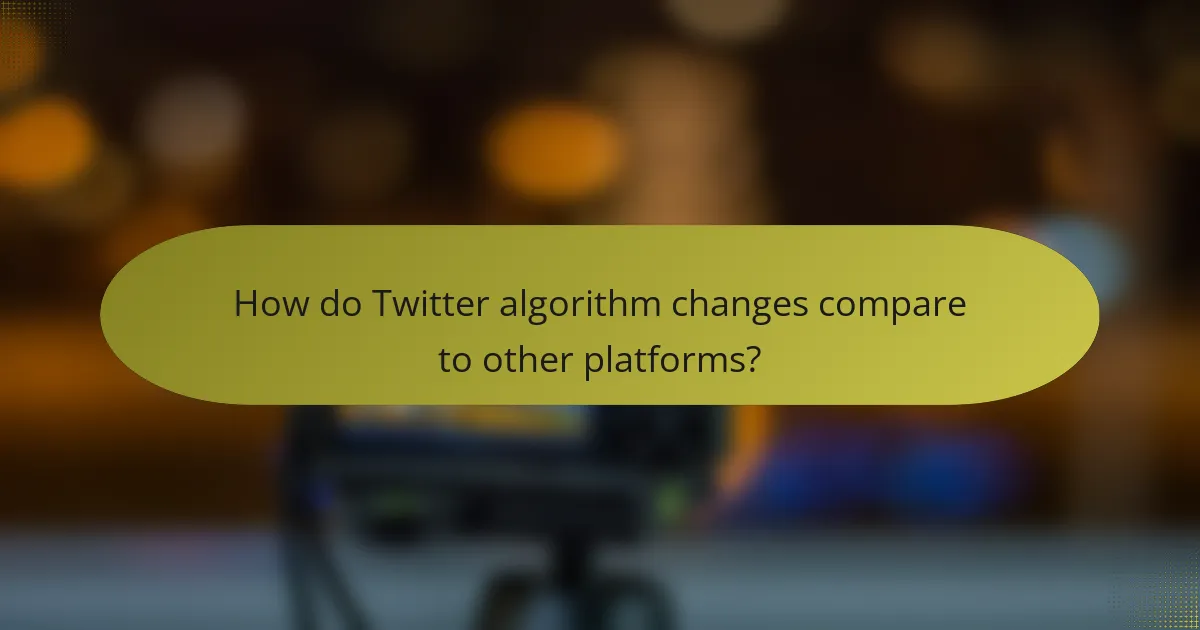
How do Twitter algorithm changes compare to other platforms?
Twitter’s algorithm changes often focus on enhancing user engagement and content relevance, similar to other social media platforms. However, the specific mechanisms and impacts can vary significantly, influencing how content is prioritized and displayed to users.
Comparison with Facebook algorithm updates
Facebook’s algorithm updates typically emphasize user interactions and content sharing, prioritizing posts from friends and family over brands. In contrast, Twitter’s updates may focus more on real-time events and trending topics, making it a platform where immediacy is crucial.
For example, while Facebook might adjust its algorithm to reduce the visibility of posts deemed less engaging, Twitter often enhances the visibility of tweets related to current events or popular discussions. This leads to a different user experience, where timely information is more readily accessible on Twitter.
Insights from Instagram’s algorithm changes
Instagram’s algorithm changes have increasingly prioritized visual content and user engagement metrics, similar to Twitter’s focus on engagement. Both platforms aim to keep users on the app longer by showing them content that resonates with their interests.
However, Instagram’s emphasis on aesthetic appeal and curated feeds contrasts with Twitter’s text-driven updates and real-time conversations. Users on Instagram might see a more polished presentation of content, while Twitter users benefit from a more immediate and conversational environment.
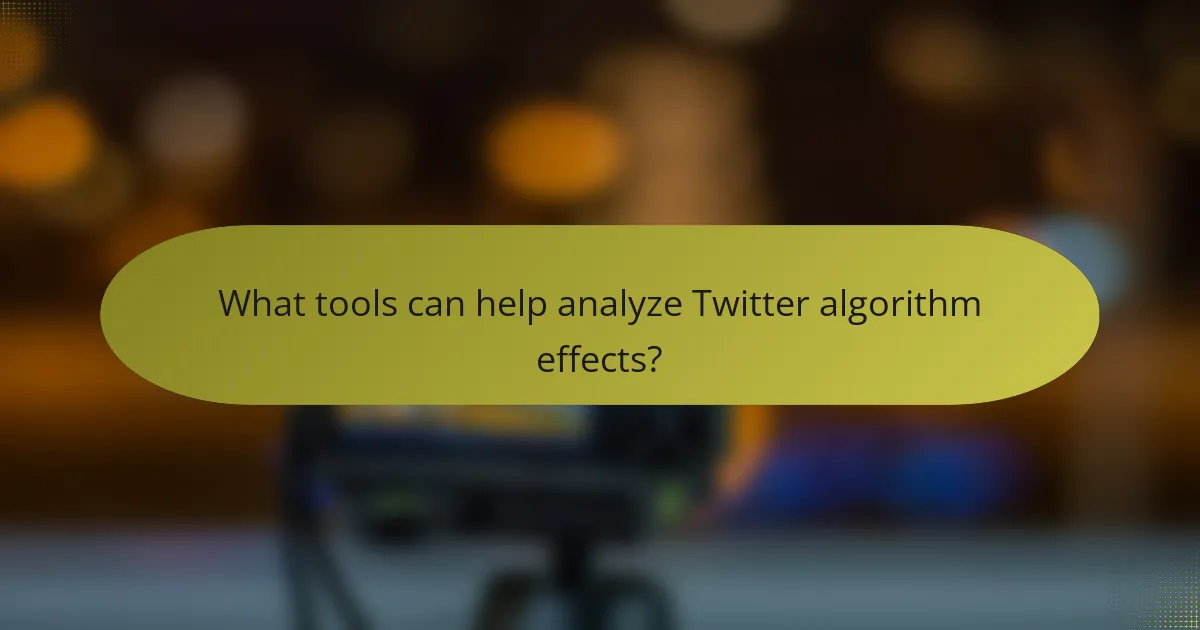
What tools can help analyze Twitter algorithm effects?
Several tools can effectively analyze the effects of Twitter’s algorithm on your content’s performance and engagement. Utilizing these tools can provide insights into how your posts are being prioritized and interacted with, allowing for data-driven adjustments to your strategy.
Hootsuite for performance tracking
Hootsuite offers comprehensive performance tracking features that allow users to monitor their Twitter account metrics in real-time. You can analyze key performance indicators such as impressions, clicks, and engagement rates to understand how the algorithm impacts your content visibility.
By setting up custom reports, you can easily identify trends over time and adjust your posting strategy accordingly. For example, if you notice a drop in engagement during specific times, you might consider altering your posting schedule to optimize visibility.
Sprout Social for engagement metrics
Sprout Social specializes in providing detailed engagement metrics that help you understand how users interact with your tweets. This tool allows you to track likes, retweets, and replies, giving you a clear picture of what resonates with your audience.
Utilizing Sprout Social’s engagement reports, you can compare the performance of different types of content, such as images versus text-only tweets. This analysis can guide your content creation efforts, helping you focus on formats that yield higher engagement rates.








